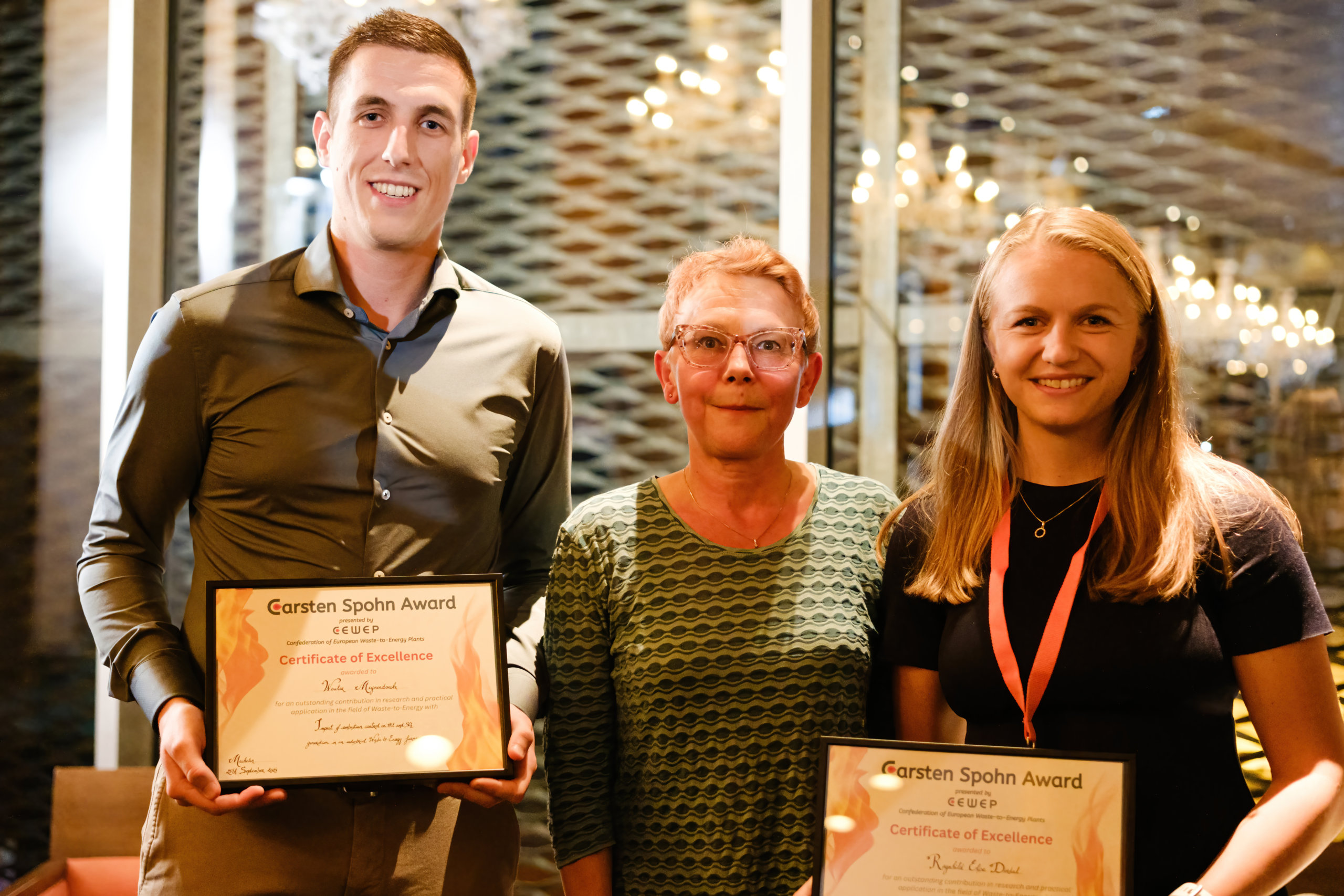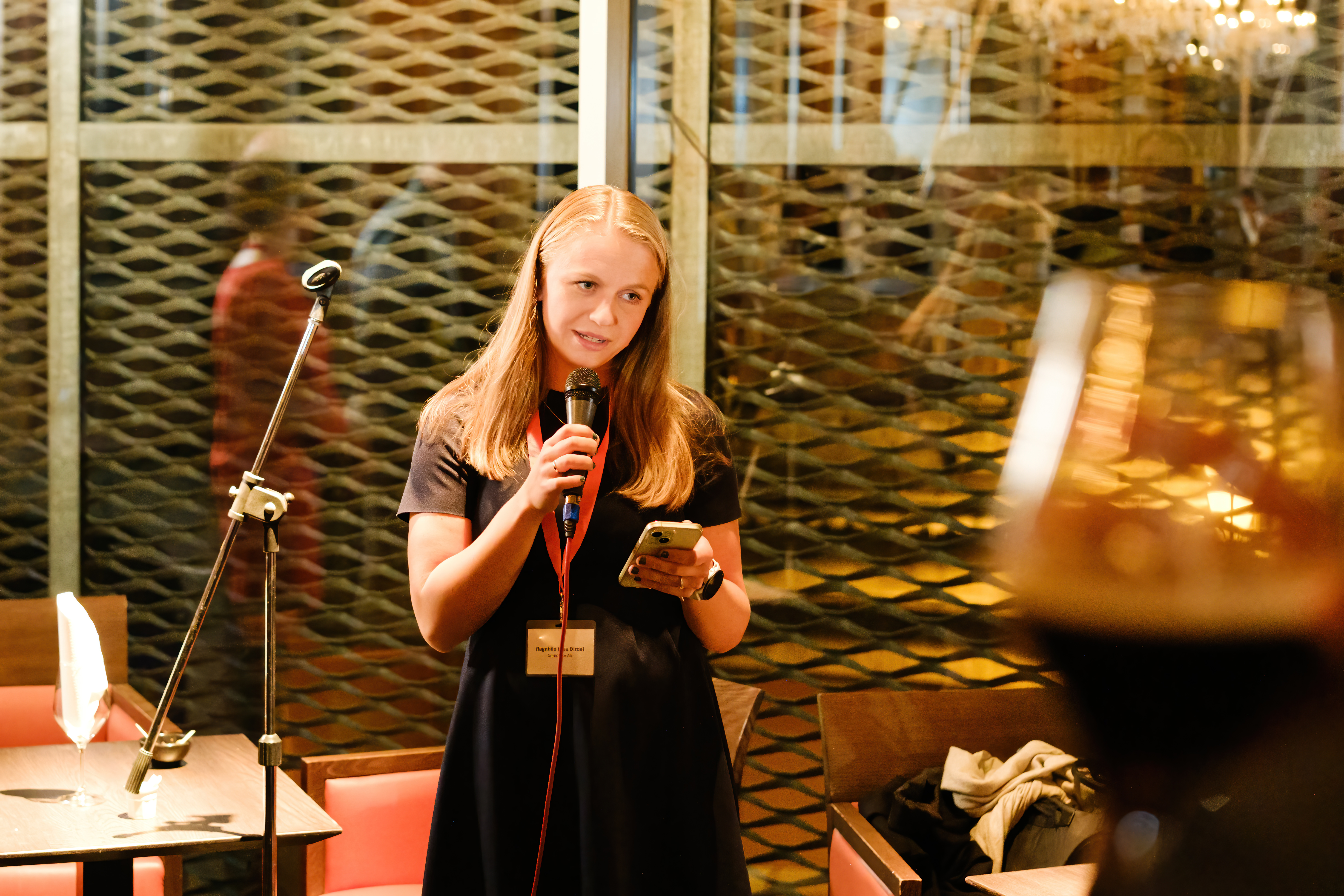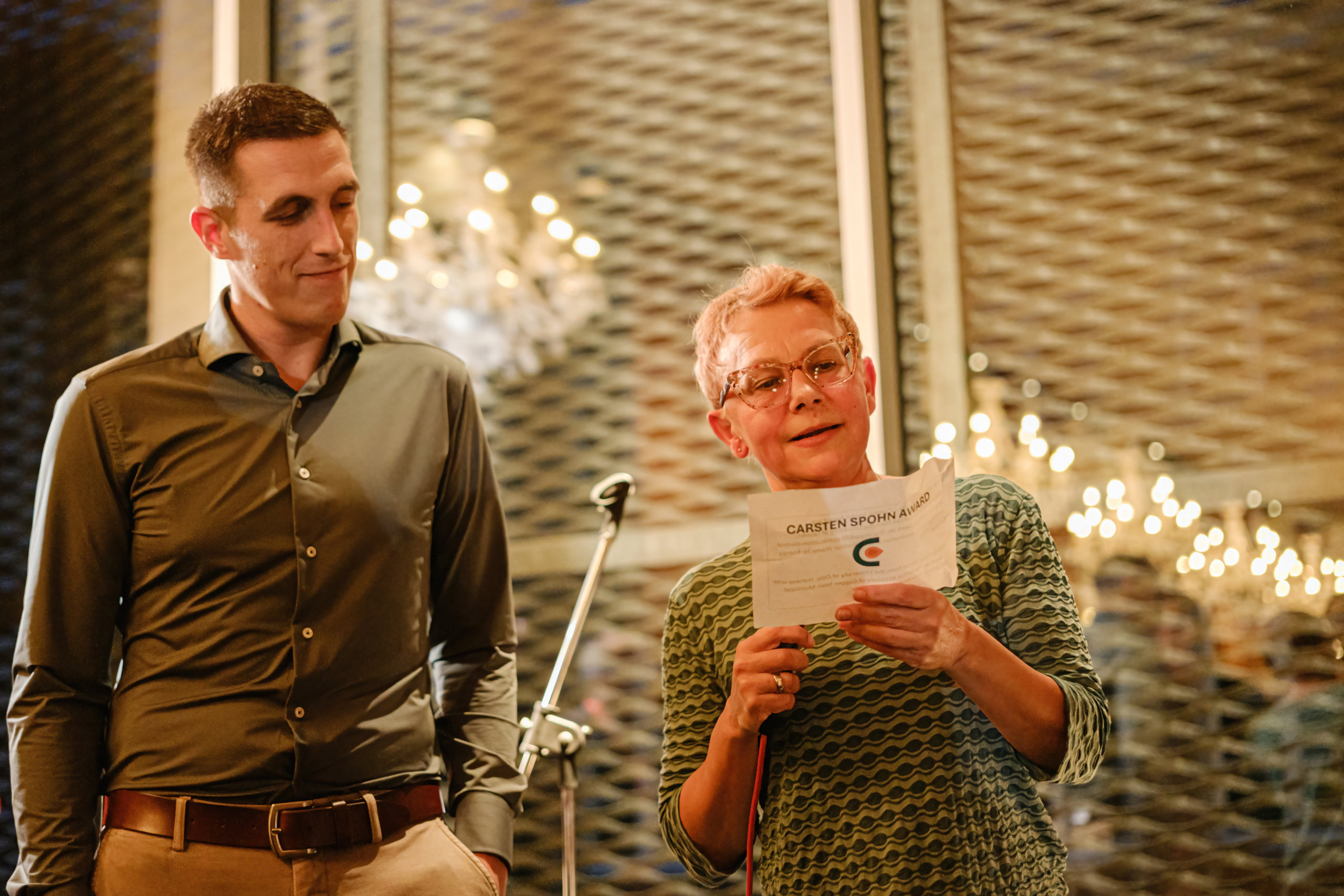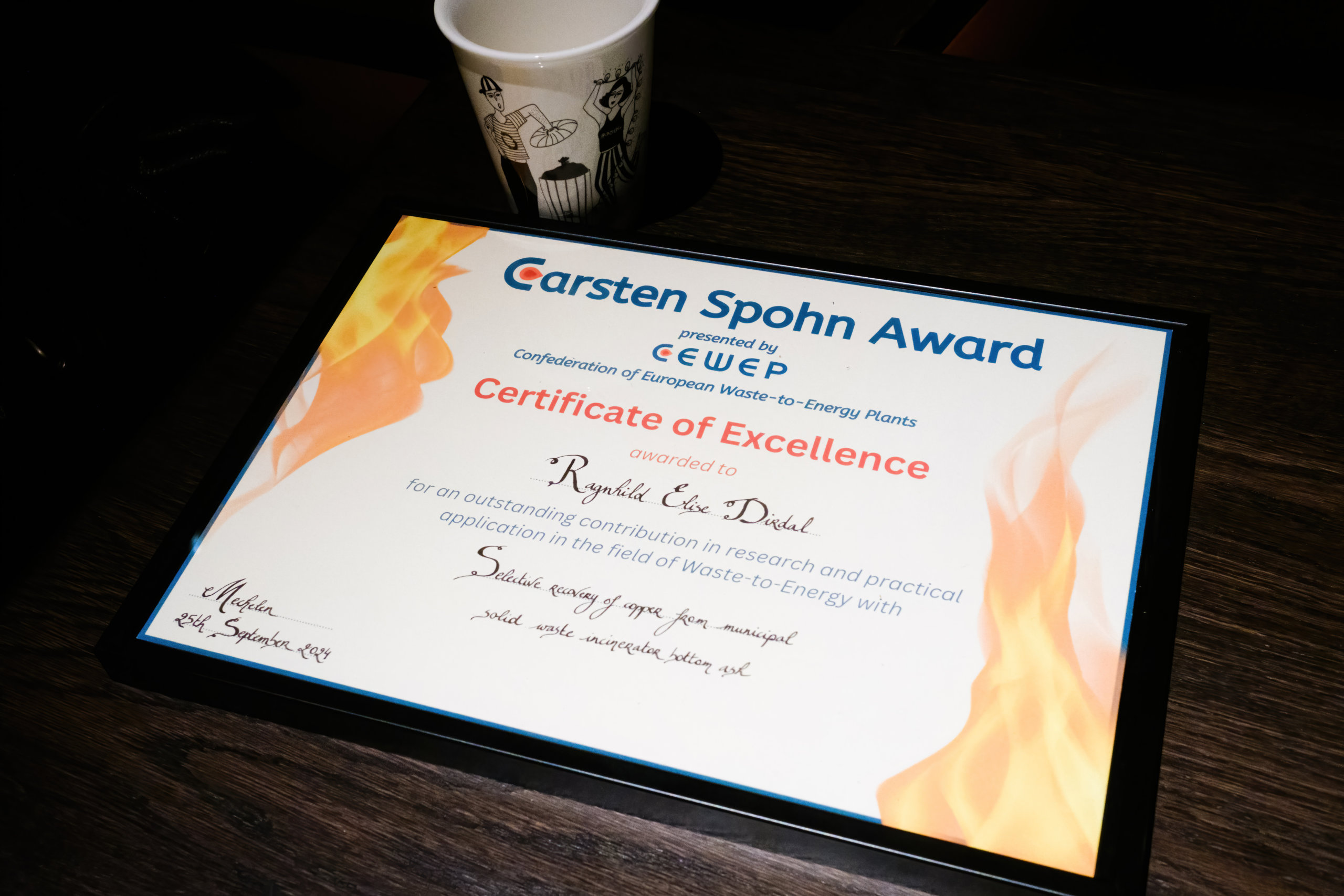News
Mechelen, 25th September 2024
CEWEP is proud to announce the winners of the first Carsten Spohn Award, created in honour of Carsten Spohn, a pioneering figure in the European Waste-to-Energy (WtE) sector and cherished CEWEP colleague. The award recognises talented students and young professionals from across Europe who have made an outstanding and relevant contribution to the area of waste management, in particular Waste-to-Energy.
The two recipients of the 2024 Carsten Spohn Award are Ragnhild Elise Dirdal from Norway and Wouter Meynendonckx from Belgium, both of whom have demonstrated excellence and practical relevance in their research. You can find more information on the research works below. Each winner gets a chance to follow a two-week traineeship in a European Waste-to-Energy plant.
The award ceremony took place on 25th September 2024 in Mechelen, Belgium, during CEWEP’s Residues Conference. Ella Stengler, managing director of CEWEP, praised the winners: “The work of Ragnhild Elise Dirdal and Wouter Meynendonckx showcases the future of Waste-to-Energy, where relevant research can lead to a more sustainable waste management. Their contributions embody the values that Carsten Spohn stood for – innovation, environmental protection, and a commitment to a circular economy. We are proud to recognise their achievements with this award.”
Next year’s Carsten Spohn Award will be presented during the CEWEP Congress in Gdansk in June 2025 and the application procedure will open soon. More information on how to apply and other practicalities can be found here.

Ragnhild Elise Dirdal
Ragnhild Elise Dirdal submitted her master’s thesis last summer (2023) at the Department of Chemistry at the University of Oslo, Norway. She has always been very enthusiastic about waste and finding new ways to utilise it, and was very happy to be able to work on this subject during her degree. The title of her thesis is: “Selective Recovery of Copper from Municipal Solid Waste Incineration Bottom Ash”.
She is currently working as a research scientist in a company called Saferock, where the possibility of developing a more sustainable alternative to ordinary Portland cement is investigated, by using different types of waste in the product instead.
Abstract
A hydrometallurgical process was investigated as a method to selectively recover copper from municipal solid waste incineration (MSWI) bottom ash. Leaching of bottom ash followed by a cementation procedure to selectively precipitate copper was investigated. MSWI bottom ash from different incineration plants in Norway was characterized and used in the study. The bottom ash was leached with a solution of ammonia (NH3) and ammonium carbonate ((NH4)2CO3)(AAC). The leaching procedure was optimized in terms of particle size, total ammonia concentration, leaching temperature, pulp density (solid/liquid ratio), and leaching time. The optimal leaching conditions were found to be 4.7 M, 60 C, 100 g bottom ash per liter leach solution and 180 minutes of leaching time, before the liquid and solid phases were separated. Extraction of more than 98 % of the copper from bottom ash was achieved. The copper was precipitated from the leach solution by a cementation procedure with metallic zinc dust. More than 90% of copper was recovered from the leach solution by cementation.

Wouter Meynendonckx
Wouter Meynendonckx graduated magna cum laude in 2020 as MSc in Chemical Engineering Technology from KU Leuven, Group T Campus. After one year as a teaching assistant on this campus, he started his PhD under the supervision of Prof. dr. ir. Johan De Greef (ChEMaRTS), Prof. dr. Mathias Verbeke (DTAI) and Prof. dr. Mariya Ishteva (NUMA-ADVISE). His research focuses on unravelling the complex interdependencies in Waste-to-Energy plants between process variables in the central combustion control system and the chemical compositions of gasses and ashes. In November 2023, during the 9th International Symposium on Energy from Biomass and Waste in Venice, he presented his first peer-reviewed conference paper “Prospective analysis of industrial data from a Waste-to-Energy plant”. During the 10th International Conference on Sustainable Solid Waste Management, he presented “Controllability of HCl and SO2 release in a grate-fired Waste-to-Energy furnace”. In the summer of 2023, he received a Baekeland mandate in cooperation with Indaver to further carry out this research.
Abstract
In Waste-to-Energy (WtE) plants, combustion gas containing HCl and SO2 typically provokes boiler fouling and corrosion, and large consumption of chemicals to meet legal emission standards. HCl and SO2 concentrations in the combustion gas obviously depend on the Cl/S ratio in the incoming waste. However, industrial WtE experiences indicate that conditions established by process control also impact the generation of HCl and SO2 during grate combustion. The latter is studied in the present work through in-depth analysis of industrial WtE process data spanning four years of plant operation. To the authors’ knowledge, a similar study was never conducted before. The results suggest that HCl in the combustion gas is strongly influenced by the overall air-to-waste ratio imposed to the (entire) furnace. Findings regarding SO2 rather highlight the significance of conditions established in the waste layer on the grate, i.e., layer thickness and flow rate of primary air. The extent of moisture in the waste seems to enhance these patterns. Whereas state-of-the-art combustion control in WtE plants still only targets the stability of thermal production, the results from this study support a further extension of the control scope with (inorganic-)thermochemical intelligence for boiler corrosion prevention and emissions stabilization. The full article can be accessed here.

